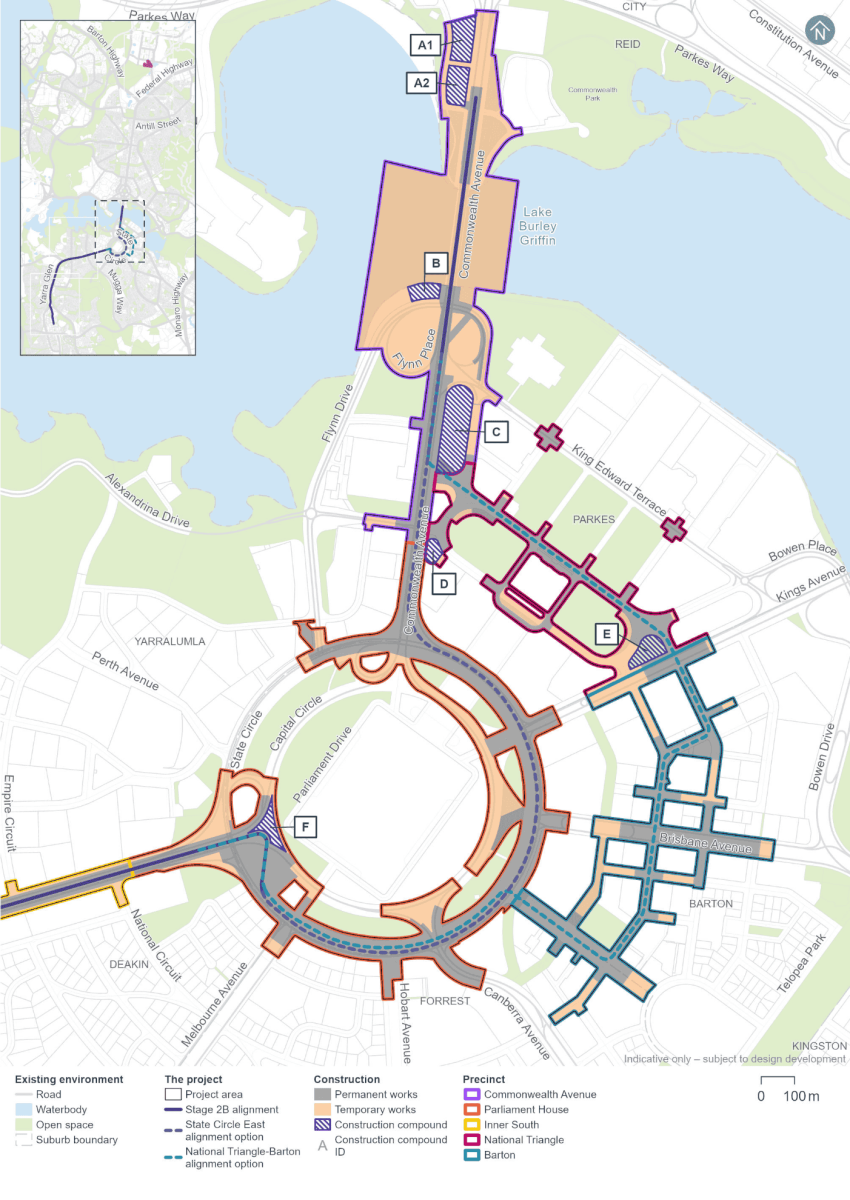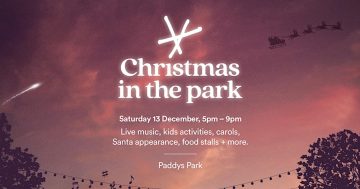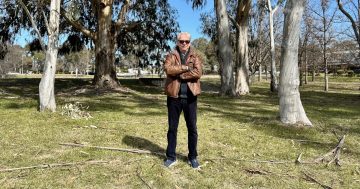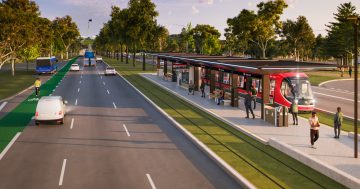
Indicative construction compounds and their potential environmental impacts were considered as part of the draft EIS process. Image: ACT Government.
Light rail stage 2B’s environmental impacts on the Golden Sun Moth, Superb Parrot and Gang-gang cockatoo would be “significant” no matter which route is chosen, according to the draft Environmental Impact Statement (EIS).
The document outlines the potential environmental impact of both the ACT Government’s preferred State Circle East alignment and the alternative so-called dog-leg through the National Triangle and Barton.
Its release is a major milestone in the project’s progression and will help decide the final alignment, alongside costing results.
The draft EIS found anticipated biodiversity losses would include some “unavoidable clearing” of native vegetation and habitat and directly impact on some listed historic heritage places.
When examining potential biodiversity impacts, most would be concentrated in the Parliament House and Yarra Glen precincts.
“[This includes] potential habitat for several threatened species, including the Golden Sun Moth, Superb Parrot, Gang-gang Cockatoo and Diamond Firetail,” the report noted.
“Losses would include five to six hectares of native vegetation and between 116 and 126 mature native trees (noting 15 to 19 of those trees are hollow-bearing).”
The surveys did not find any listed threatened flora species or endangered ecological communities in the proposed construction areas.
Efforts have already been made to avoid and minimise impacts on native species, including the avoidance of around eight hectares of Golden Sun Moth habitat and 15 ha of Gang-gang Cockatoo and Superb Parrot foraging habitat.
The vulnerable-listed Golden Sun Moth would see 9.88 ha or 9.60 ha of habitat (for the State Circle East and National Triangle-Barton alignment options respectively) impacted.
“Assuming that all potential habitat is occupied by the species, it is likely that the project would adversely affect habitat critical to the survival of the Golden Sun Moth, resulting in a significant impact to the species,” the report noted.
The project would also impact 5.64 ha or 5.06 ha of suitable Gang-gang Cockatoo and Superb Parrot habitat (for the State Circle East and National Triangle-Barton alignment options respectively).
“The project would also impact six or five suitable Gang-gang Cockatoo breeding trees, that occur in the State Circle East and National Triangle-Barton alignment options, respectively,” the report noted.
“Removal of this habitat would interfere with the recovery of the species and would result in a significant impact on the Gang-gang Cockatoo … [and] may therefore interfere with the recovery of the [Superb Parrot].”
Field surveys determined Perunga Grasshopper and Striped Legless Lizard habitats aren’t in the project’s clearance footprint.
More than 3000 trees were assessed for the report, which found the State Circle East alignment option may see about 700 trees removed. The alternative route could result in a higher number being removed.
The project plans to follow a minimum two-for-one replacement strategy for any removed trees.
Potentially significant adverse heritage impacts for Albert Hall and Hotel Kurrajong were also identified.
The State Circle East alignment option would see moderate to significant impacts (during both construction and operation) to Albert Hall, with historic trees on the Commonwealth Avenue median to be removed.
“[The proposed] Albert Hall stop would alter historic views from Albert Hall to Commonwealth Avenue and obscure the historical significance of Albert Hall as an early landmark building of Canberra,” the report noted.
The National Triangle-Barton alignment would see similar impacts to Albert Hall but only during the construction phase.
However, this route would deliver significant impacts for Hotel Kurrajong during both construction and operation, with historical trees removed along the northern and western edges of the Hotel Kurrajong Garden City block.
“During operation the historic road geometry and grassed settings of Hotel Kurrajong’s north-western corner would change,” the report noted.
“The Bligh Street stop would be partially within the boundary of the heritage place, within the verge area to be converted to hard surface, which would adversely impact the expression of the heritage values of the Hotel Kurrajong as demonstrated via its landscaped garden setting.”
The draft EIS is on public exhibition until 5 September.
Public Transport Canberra chair Amy Jelacic urged everyone to engage with the project, ask questions and give feedback.
“PTCBR is thrilled to see Stage 2B finally reach this point after significant setbacks and holdups. This is a major opportunity for the general public to get into the details and see what is being proposed to take light rail to Woden,” she said.
“Light rail was supposed to be over the lake and well and truly on its way to Woden by now. It’s frustrating that the ACT Government’s initial dates for this project weren’t met.
“We do understand that this is a complex project and we are excited to finally see it moving forward.”
All submissions will be considered and responded to by Infrastructure Canberra as part of the revised, final EIS.
There will be several public drop-in information sessions:
- Monday, 21 July, 10 am to 2 pm: ACT Government Office, 220 London Circuit, Canberra
- Tuesday, 22 July, 1 pm to 4 pm: Woden Library
- Wednesday, 23 July, 2:30 pm to 6:30 pm: Albert Hall
- Thursday, 24 July, 4 pm to 7 pm: Presbyterian Church of Saint Andrew
- Saturday, 26 July, 11 am to 3 pm: Canberra Bridge Club
- Monday, 11 August, 2:30 pm to 6:30 pm: ACT Government Office
- Tuesday, 12 August, 10 am to 2 pm: Albert Hall
- Wednesday, 13 August, 2:30 pm to 6:30 pm: Canberra Bridge Club
- Thursday, 14 August, 3 pm to 7 pm: Woden Library
- Sunday, 17 August, 11 am to 2 pm: Presbyterian Church of Saint Andrew.
The final EIS will be assessed by the Department of Climate Change, Energy, the Environment and Water and the Territory Planning Authority.
An outcome is expected in 2026.
Printed copies of the draft EIS can be found at the Gungahlin, Dickson, Civic, Woden and Tuggeranong libraries.















